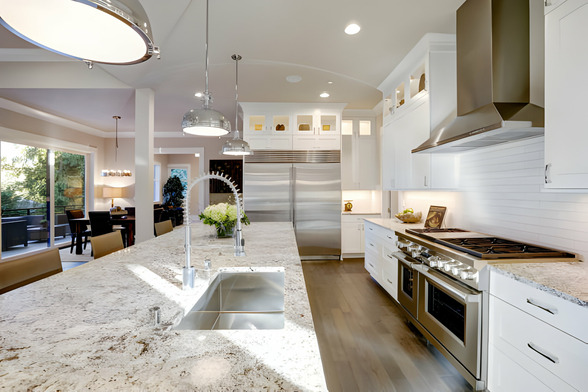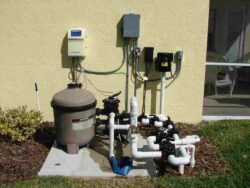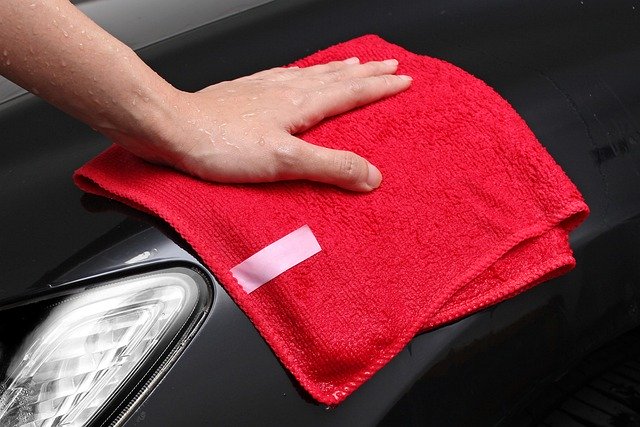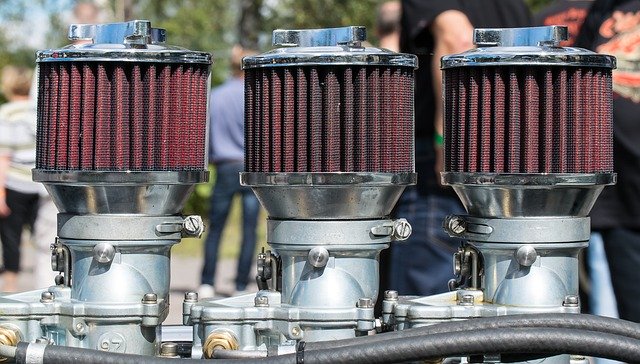Granite countertops have become a popular choice for homeowners due to their durability, elegance, and timeless appeal. However, to keep your granite countertops looking pristine and ensure they last a lifetime, you must know how to clean and maintain them properly. In this comprehensive guide, we will delve into the tips and tricks to help you preserve the beauty and functionality of your granite countertops.
Before we jump into cleaning and maintenance, it’s essential to understand what granite is and why it’s such a popular choice for countertops. Granite is a natural stone that forms beneath the Earth’s surface through the cooling and solidification of molten rock. It’s composed mainly of quartz, feldspar, and mica, giving it its distinct appearance. Granite comes in a variety of colors and patterns, making it a versatile and attractive choice for kitchen and bathroom countertops.
Click here to have a glance at our post on 10 Importance of Cleaning Your Home’s Water Heater
Why Choose Granite Countertops?
Granite countertops offer several advantages:
- Durability: Granite is known for its remarkable durability. It can withstand heat, scratches, and daily wear and tear, making it an ideal choice for kitchens.
- Aesthetics: Granite countertops add a touch of elegance and natural beauty to your home. Each slab is unique, and its rich, vibrant colors can enhance any interior design.
- Hygiene: Granite is naturally resistant to bacteria and germs, making it a sanitary choice for food preparation areas.
Daily Cleaning and Maintenance
Proper daily cleaning is the foundation of granite countertop maintenance. Follow these steps to keep your countertops looking their best.
Materials You’ll Need
- Soft, clean cloth or paper towels
- Mild dish soap
- Warm water
- Microfiber cloth
- Granite-safe cleaner
Step 1: Wipe Down the Countertop
Begin by wiping down the countertop with a soft, clean cloth or paper towels to remove any loose debris, crumbs, or spills. This step prevents small particles from scratching the surface during cleaning.
Step 2: Prepare a Cleaning Solution
Mix a few drops of mild dish soap with warm water to create a gentle cleaning solution. Avoid using acidic or abrasive cleaners, as they can damage the granite’s surface over time.
Step 3: Clean the Countertop
Dampen a microfiber cloth with the soapy water solution and wipe the countertop surface in a circular motion. This will help remove any stains, grease, or dirt. Avoid using excessive pressure; gentle cleaning is more effective and less likely to cause damage.
Step 4: Rinse and Dry
After cleaning, rinse the countertop with a clean, damp cloth to remove any soap residue. Finally, dry the surface with a dry, clean cloth or paper towels to prevent water spots.
Here is our related post on The Importance of Cleaning Your Home’s Range Hood Filters
Deep Cleaning and Stain Removal
Despite your best efforts, granite countertops may occasionally develop stains or require a deeper cleaning. Here’s how to address these issues:
Materials You’ll Need
- Baking soda
- Hydrogen peroxide
- Plastic wrap
- Plastic scraper
- Soft cloth
- Poultice
For Common Stains
Step 1: Create a Baking Soda Paste
For common stains like coffee or wine, mix a 1/4 cup of baking soda with enough hydrogen peroxide to create a paste. The paste should have the consistency of thick cream.
Step 2: Apply the Paste
Spread the paste over the stained area and cover it with plastic wrap. Allow it to sit for 24 hours. The paste will draw the stain out of the granite.
Step 3: Remove the Paste
After 24 hours, remove the plastic wrap and gently scrape off the dried paste with a plastic scraper. Rinse the area with water and dry it with a soft cloth.
For Oil-Based Stains
Step 1: Create a Poultice
For oil-based stains, create a poultice by mixing a 1/4 cup of baking soda with water until you have a paste with the consistency of sour cream.
Step 2: Apply the Poultice
Spread the poultice over the stain and cover it with plastic wrap. Leave it in place for 24 hours.
Step 3: Remove the Poultice
After 24 hours, remove the plastic wrap and gently scrape off the dried poultice. Rinse the area with water and dry it with a soft cloth.
For Stubborn Stains
In case the stain persists after the above methods, consult a professional stone restoration specialist for further treatment.
See also our post on The Importance of Deep Cleaning Your Home Regularly
Sealing Granite Countertops
Sealing granite countertops is an essential part of maintenance. Sealing helps to protect the stone from stains, liquid penetration, and other forms of damage. Follow these steps to properly seal your granite countertops:
Materials You’ll Need
- Granite sealer
- Soft cloth
Step 1: Choose the Right Sealer
Select a high-quality, penetrating sealer specifically designed for natural stone surfaces. Read the manufacturer’s instructions for the best results.
Step 2: Clean the Countertop
Before sealing, ensure your granite countertop is clean and dry. Follow the daily cleaning steps outlined in section 2.
Step 3: Apply the Sealer
Apply the sealer as per the manufacturer’s instructions. Typically, this involves applying the sealer evenly and allowing it to soak into the granite for the recommended time. You may need to apply multiple coats, ensuring each layer is dry before applying the next.
Step 4: Buff the Countertop
After allowing the sealer to penetrate the granite, use a soft cloth to buff the surface gently. This will remove any excess sealer and leave your countertop with a beautiful, protective finish.
Step 5: Test for Sealing Efficacy
Test the effectiveness of the sealer by dropping a few drops of water on the countertop. If the water beads up, the seal is intact. If it soaks into the granite, it’s time to reseal the surface.
Frequency of Sealing
The frequency of sealing your granite countertops depends on the type of sealer used and the specific needs of your countertop. In general, most countertops should be sealed every 1 to 3 years.
Preventative Measures
In addition to cleaning and sealing, there are several preventative measures you can take to maintain the quality of your granite countertops over time.
- Use Cutting Boards: To prevent scratches, always use cutting boards when chopping, slicing, or dicing food.
- Use Trivets and Coasters: Place trivets or coasters under hot cookware, pans, and cold beverages to protect the granite from extreme temperatures.
- Avoid Acidic Substances: Acidic substances, such as citrus juices and vinegar, can etch the surface of the granite. Quickly wipe up any spills to avoid damage.
- Use Soft Cleaning Tools: When cleaning your countertops, use soft cloths and sponges to avoid abrasive materials that could scratch the surface.
- Regularly Inspect for Damage: Periodically inspect your countertops for any damage, such as cracks or chips. Address these issues promptly to prevent further deterioration.
- Be Cautious with Chemicals: Avoid using harsh chemicals, like bleach or ammonia, as they can damage the sealant and the stone itself.
- Handle Granite with Care: When installing or moving heavy objects on or near granite countertops, take care to avoid chipping or cracking the stone.
Common Mistakes to Avoid
To ensure the longevity and beauty of your granite countertops, it’s essential to avoid common mistakes that can lead to damage and costly repairs.
- Using Harsh Cleaning Products: Avoid using harsh chemicals, abrasive cleaners, or scouring pads, as they can damage the surface of the granite and degrade the sealant.
- Skipping Regular Cleaning: Neglecting daily cleaning and maintenance can lead to the build-up of dirt, grime, and stains that are more challenging to remove over time.
- Not Using Cutting Boards or Trivets: Failing to use cutting boards and trivets can result in scratches and damage to the surface of your countertops.
- Neglecting Sealing: Regularly sealing your granite countertops is vital for maintaining their beauty and preventing staining. Don’t skip this crucial step.
- Allowing Stains to Set In: Promptly clean up spills to prevent stains from setting into the stone. The longer a stain sits, the more challenging it can be to remove.
- Using the Wrong Type of Sealer: Not all sealers are suitable for granite countertops. Make sure you use a high-quality sealer designed for natural stone surfaces.
- Ignoring Professional Help: When in doubt or when dealing with severe damage, consult with a professional stone restoration specialist. Attempting DIY repairs on valuable countertops can lead to further problems.
See also 5 Amazing Tips for Reducing Waste in Your Home Cleaning Routine which you would not want to miss.
Conclusion
Maintaining your granite countertops is a straightforward process when you follow the right steps and avoid common mistakes. With proper daily cleaning, occasional deep cleaning, regular sealing, and the adoption of preventative measures, your granite countertops can stay beautiful and functional for decades.
Investing time and effort in caring for your granite countertops will not only enhance the aesthetics of your home but also increase the longevity of this valuable addition. Remember that granite is a natural stone, and its timeless beauty can be preserved through simple, yet effective, cleaning and maintenance practices. By following the tips and tricks outlined in this guide, you can enjoy the elegance and durability of your granite countertops for years to come.
Regenerate














